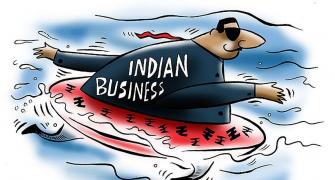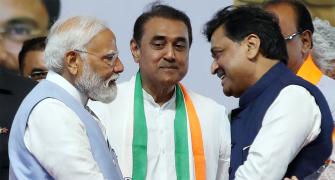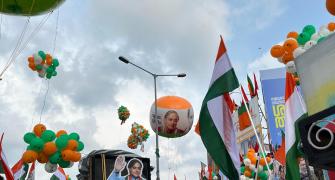With the Indian economy projected to grow 6 per cent during the current financial year and inflation expected to stay around 4 per cent, Reserve Bank of India Governor D Subbarao is trying to do his bit in reviving growth by increasing the flow of credit through reduction in policy rates.
By reducing the repo rate by another 25 basis points, he is hinting at a further reduction in interest rates. And, through the 25 bps cut in reverse repo rate, he is trying to make it less remunerative for banks to park surplus liquidity with the central bank and instead prodding them to lend more to the productive sectors.
Between October and April 21, the repo rate has been lowered by 425 bps, while the reverse repo rate has been cut by 175 bps. Yet, the incremental credit flow has dropped and for most part of April, banks have parked over Rs 100,000 crore (Rs 1,000 billion) with RBI through the reverse repo window.
As a result, the governor wants Indian banks to lower interest rates and lend more to productive sectors. In fact, RBI has gone on to say that banks with strong deposit base should grow their loan book at 20 per cent or more.
He has been quite upfront in saying that the full pass through of measures announced by the central bank since the credit crisis intensified in September has not taken place and there was scope for banks to reduce lending and deposit rates.
Though RBI is aware of the difficulties posed by small saving rates on further reduction in bank deposit rates, the annual policy statement has said: 'It may, however, be noted that small savings and bank deposits are not perfect substitutes.
'Banks should not, therefore, be overly apprehensive about reducing deposit interest rates for fear of competition from small savings, especially as overall systemic liquidity remains comfortable.
'There is scope for the overall interest rate structure to move down within the policy rate easing already effected by the Reserve Bank. Further action on policy rates is now being taken to reinforce this process.'
Subbarao has also factored in the overall resource flow to the commercial sector that declined by 13 per cent in 2008-09 to Rs 6,79,040 crore (Rs 6,790.4 billion), mainly due to lower fund flow from non-banking channels.
During the last financial year, flow of resources from banks declined by 6.72 per cent to Rs 4,14,902 crore (Rs 4,149.02 billion), while fund flow from other sources, which included overseas debt, equity and loans from non-banking finance companies, fell by 21.32 per cent to Rs 2,64,138 crore (Rs 2,641.38 billion) during the year ended March 2009.
At the top of the policy stance in Subbarao's first annual policy statement was credit expansion at viable rates, while preserving the credit quality to support a return to a high growth path. At the same time, the statement also said that a possible rise in non-performing assets during 2008-09 should not be seen to be unusual.
While a 25 bps reduction is not being seen as a very significant step, the governor has also said that RBI would monitor the global and domestic conditions and respond swiftly through policy adjustments to check adverse implications.
The third element of Subbarao's policy stand is maintaining a monetary and interest rate regime that supports price and financial stability, while factoring in lessons of the financial crisis.
RBI's overall assessment is that there is little chance of a global economic recovery in 2009 and that would adversely impact access to overseas sources of financing for Indian companies.





